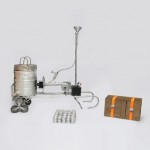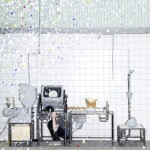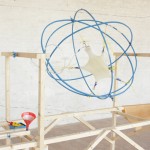Don't Run shoe factory brings production line to local high streets
Italian designer Eugenia Morpurgo has set up a high-street micro factory, which uses digital manufacturing to produce her range of customisable shoes that wearers can assemble and repair themselves.
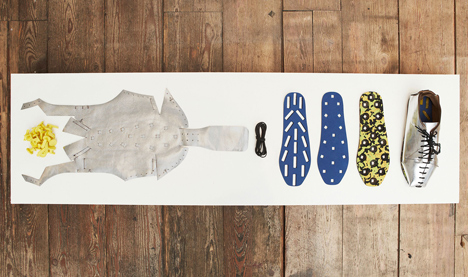
Called Don't Run - Beta, the project is a collaboration between Eugenia Morpurgo and British-Spanish designer Juan Montero to create a production line for leather shoes, so the buyer can customise their new footwear and see it being produced in-store on a laser cutter and 3D printer.
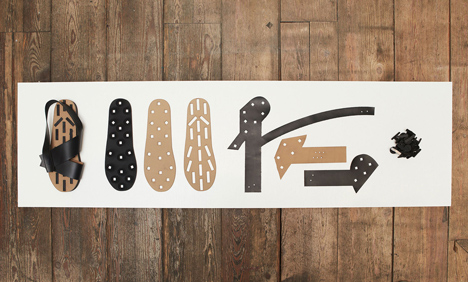
Morpurgo first launched her canvas repairable shoes – that can be repaired easily because they're joined with reversible, mechanical fastenings rather then the usual stitches or glue – in 2011.
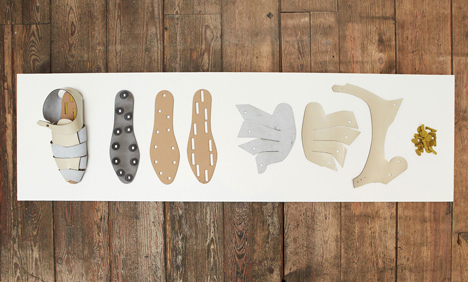
Now she has followed up with a new range of colourful sandals, lace-ups and boots using the same system, but with leather uppers designed by Sophia Guggenberger, Anastasija Mase and Eliška Kuchtová.
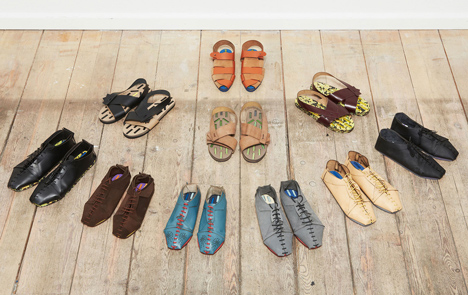
Customers first choose the style of shoe they want and the pattern is adjusted to their size on-screen. They then choose the foam from which the sole and insole will be cut, colour of filament for the 3D-printed connectors and a piece of leather for the uppers. They watch the machines at work and are then taught how to assemble the shoes.
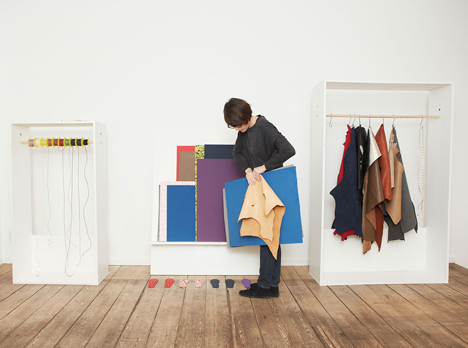
To make the shoe, the leather uppers and rubber soles are laser-cut with a series of connecting holes. The 3D printer then produces a series of connections that are used to attach each piece of material through the holes.
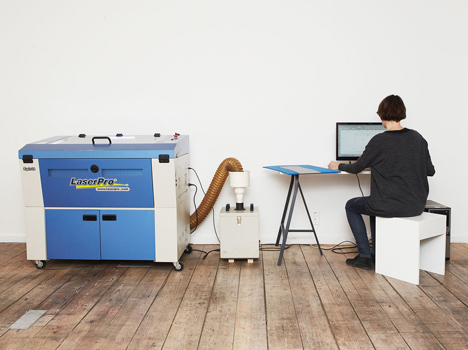
Next, the uppers are folded over the sole and either tied with laces or attached with more connectors, depending on the design.
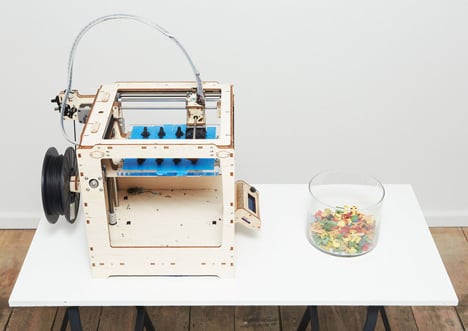
"Taking a step away from the established status quo and the relentless pursuit of quantity and profit, Don't Run - Beta offers a possible alternative to mass production through small scale, on-demand digital manufacturing," said Morpurgo. "It is an experimental system focused on illustrating the possibility of a transparent, open and collaborative production line for shoe making and design."
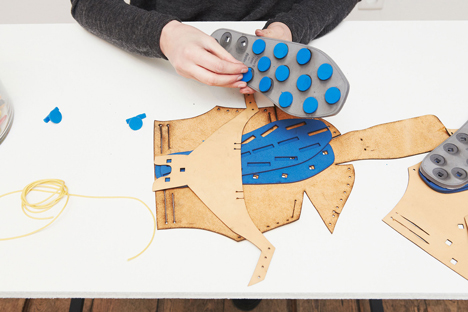
She explained that this pilot production process is an example of how designers can use digital technologies to make their own products.
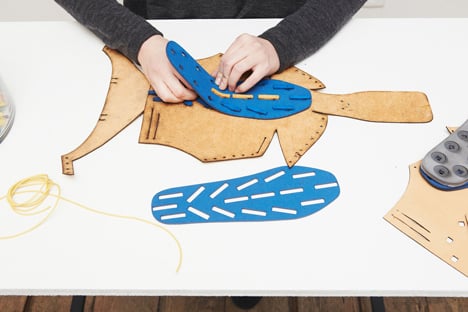
“The decentralisation of large-scale production and distribution makes it possible to offer greater control to both designers and consumers," Morpurgo added. "What we have are high streets with micro factories set up to deliver personal and transparent products only in the presence of real demand."
It is also a cheaper way of producing shoes on a small scale. Traditionally, shoe producers need two sole moulds for each shoe, but this is expensive and the reason companies produce a large number of shoes to cover the cost.
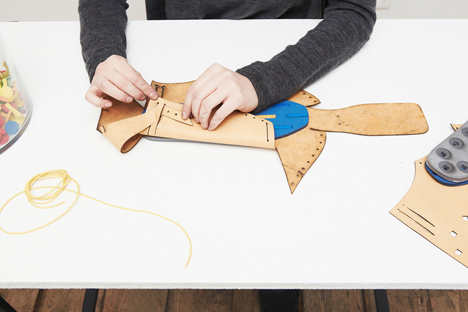
As Don't Run - Beta replaces the physical moulds with digital data, the designers are able to use unlimited digital libraries of soles, sizes and styles. This not only eliminates the need for storage space but also reduces the cost by up to 75 percent.
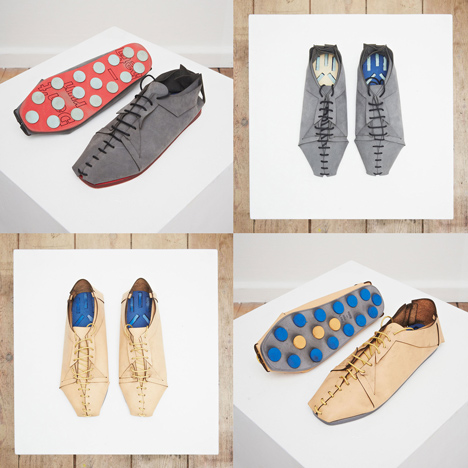
The leather is sourced from local sellers in an attempt to re-use off cuts and waste material, so the pieces are cheaper but also unique.

The price of each pair is dependant on the weight, since this is a direct reflection of the material used and time taken to cut and produce the shoe.
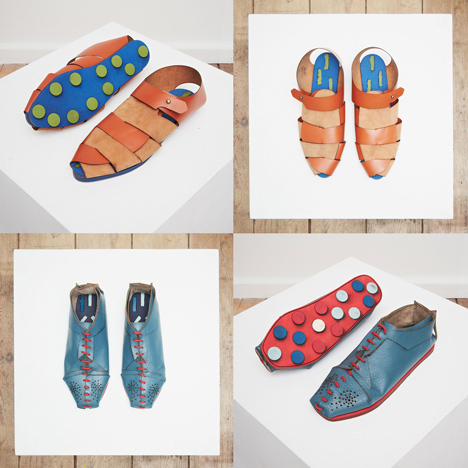
The production line was trialled at the end of last year as part of a month-long residency at an art space called These Things Take Time in Ghent, Belgium.
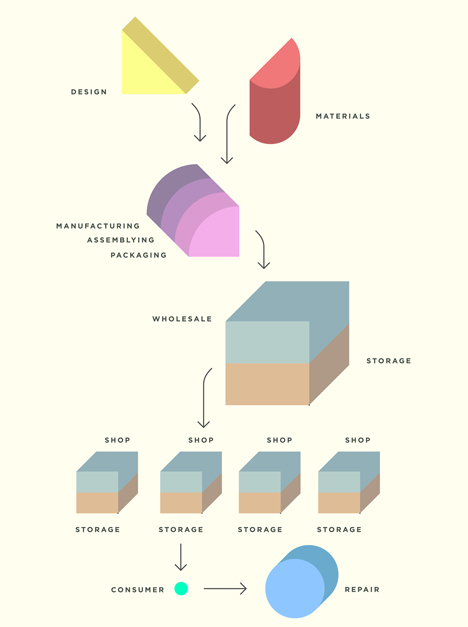
It was set up in collaboration with TimeLab Ghent who provided all the technical support and machinery.
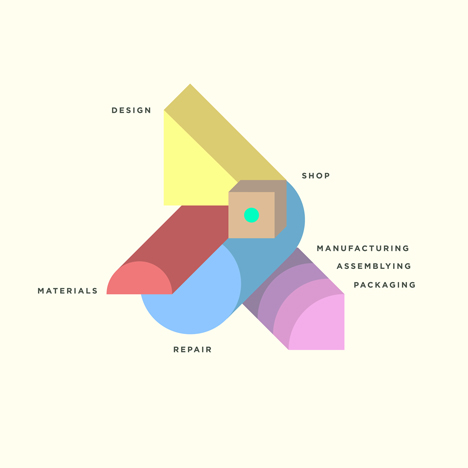
Don't Run – Beta was also made in collaboration with Olivia de Gouveia for graphic communication and Francesco Zorzi for illustrations.
